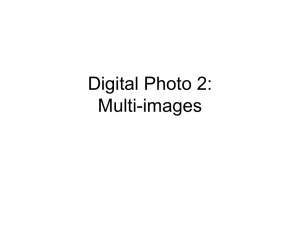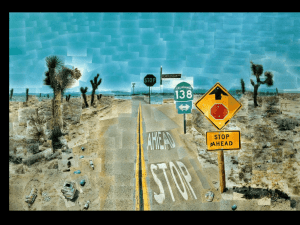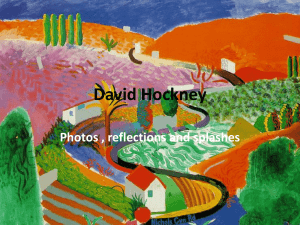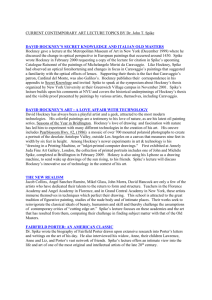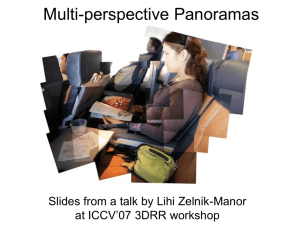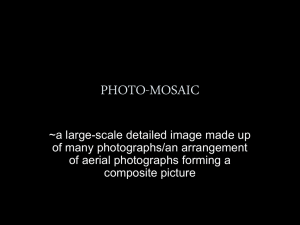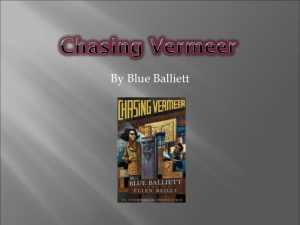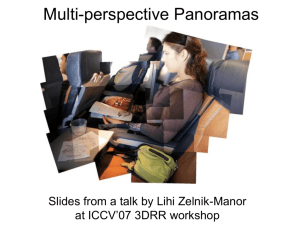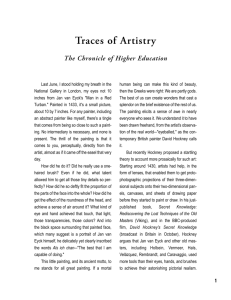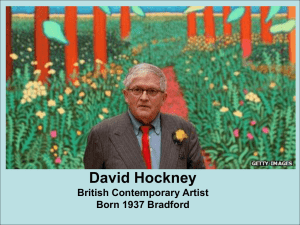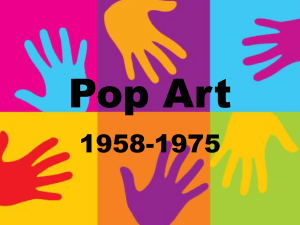David Hockney
advertisement
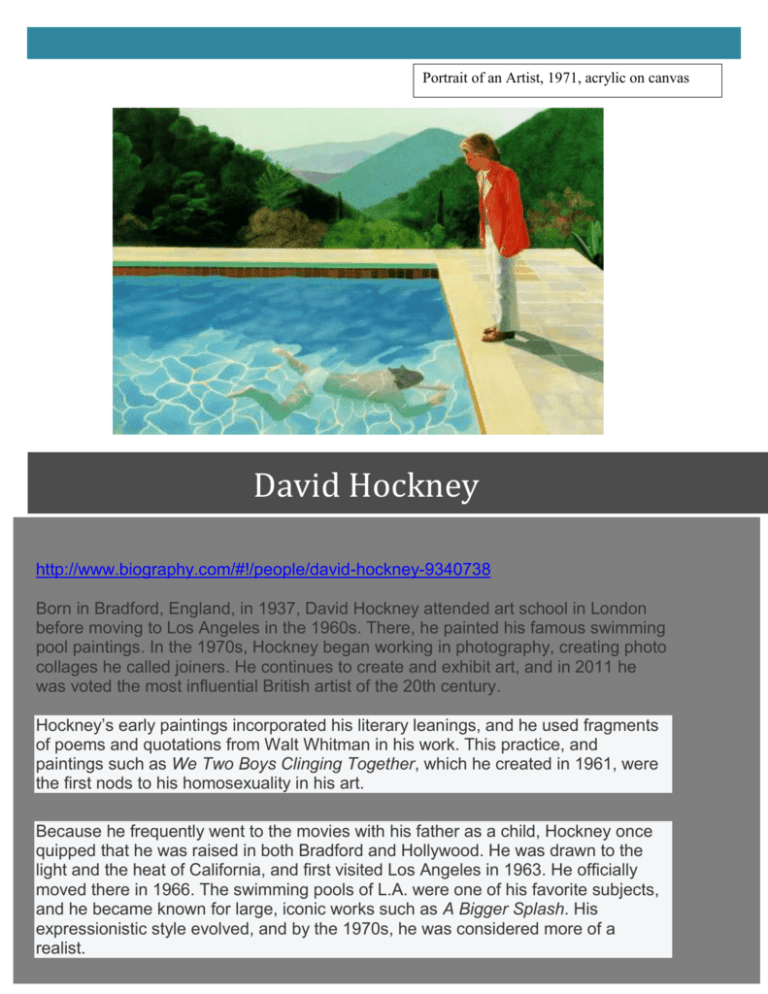
Portrait of an Artist, 1971, acrylic on canvas David Hockney http://www.biography.com/#!/people/david-hockney-9340738 Born in Bradford, England, in 1937, David Hockney attended art school in London before moving to Los Angeles in the 1960s. There, he painted his famous swimming pool paintings. In the 1970s, Hockney began working in photography, creating photo collages he called joiners. He continues to create and exhibit art, and in 2011 he was voted the most influential British artist of the 20th century. Hockney’s early paintings incorporated his literary leanings, and he used fragments of poems and quotations from Walt Whitman in his work. This practice, and paintings such as We Two Boys Clinging Together, which he created in 1961, were the first nods to his homosexuality in his art. Because he frequently went to the movies with his father as a child, Hockney once quipped that he was raised in both Bradford and Hollywood. He was drawn to the light and the heat of California, and first visited Los Angeles in 1963. He officially moved there in 1966. The swimming pools of L.A. were one of his favorite subjects, and he became known for large, iconic works such as A Bigger Splash. His expressionistic style evolved, and by the 1970s, he was considered more of a realist. Image One Hockney, A Lawn being Sprinkled, 1967, acrylic on canvas Absent the human figure, A Lawn Being Sprinkled offers the viewer a place between the timeless and the instantaneous, contrasting the imperturbable stasis of the blue sky, gray house, and fence with the time-frozen ephemerality of the sprinkling water and the serried hand-marked rows of green grass. Image Two Hockney, Place Furstenberg, Paris, 1985, Photo Collage A joiner consists of a series of photographs taken from different viewpoints, arranged (overlapping) to form a single piece. By taking the pictures from carefully selected viewpoints, and arranging them in the right way, Hockney is able to change the apparent shape of space and introduce the element of time into the work. For instance, using this technique you can make a circular wall seem flat. Imagine walking around the wall taking lots of photos at a fixed distance from the wall, with the camera pointing straight towards the wall. If you just look at the middle of each photo, it will look like you are looking straight on at a flat section of wall. Since every photo looks like this, if you cut them up and lay them next to one another so that they join up, it will look like a flat section of wall. In fact part of Hockney's (not entirely self-consistent) philosophy behind these joiners forced him not to cut up the photos. The above example could almost be achieved without cutting, but it would require considerably more photos for it to work. Guiding Questions 1) Examine the images created by Hockney in this document - describe the one you like the most by using the art elements + principles of design. 2) Describe how the photo collage was made. How is repetition used to create visual movement. PERSONAL CONNECTION: Which style of Hockney’s would you like to try (acrylic painting or photo collage). What subject would you create in this technique - why?
